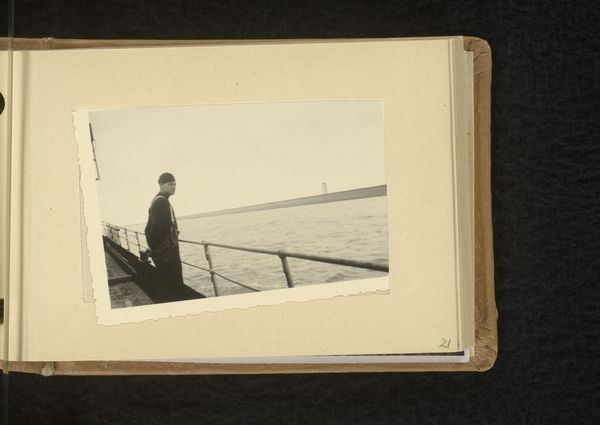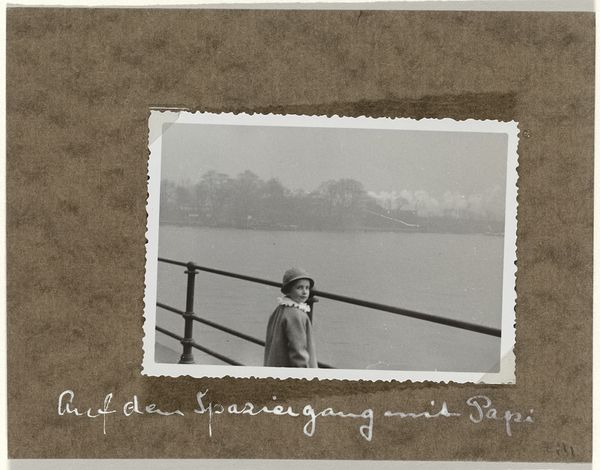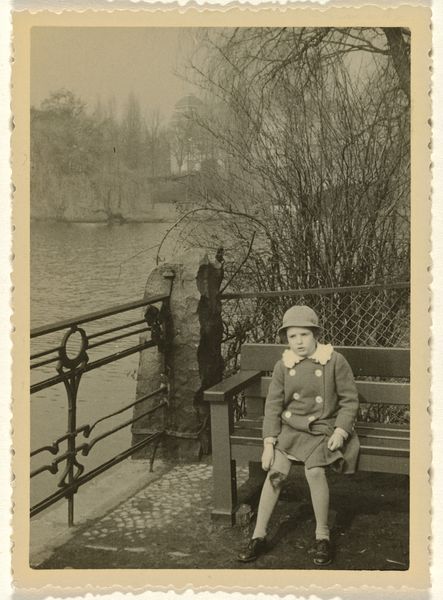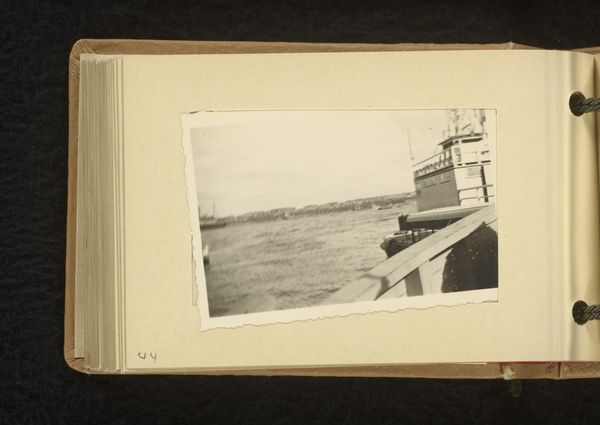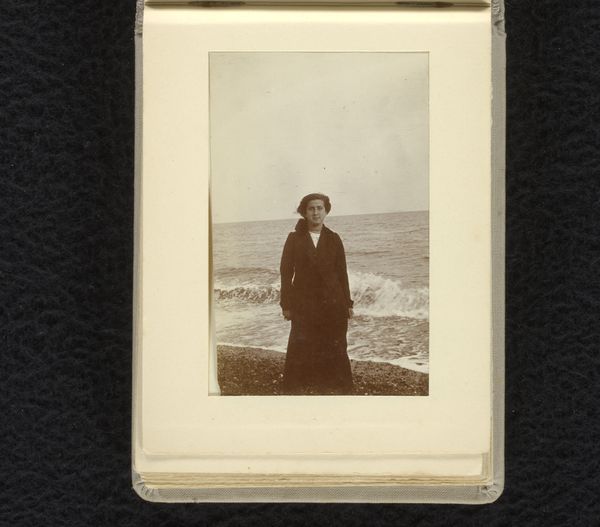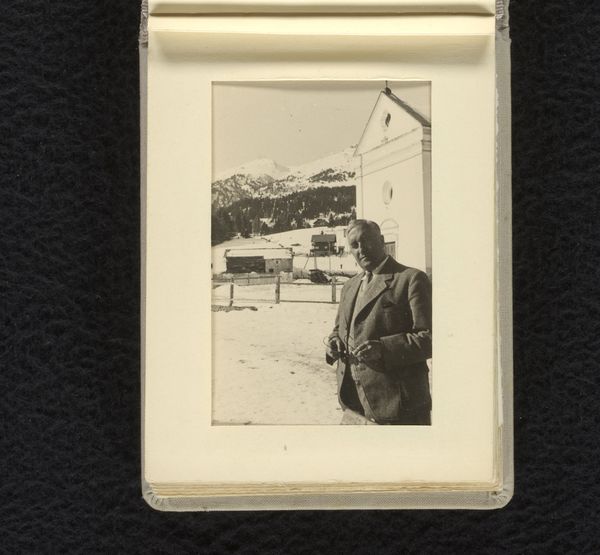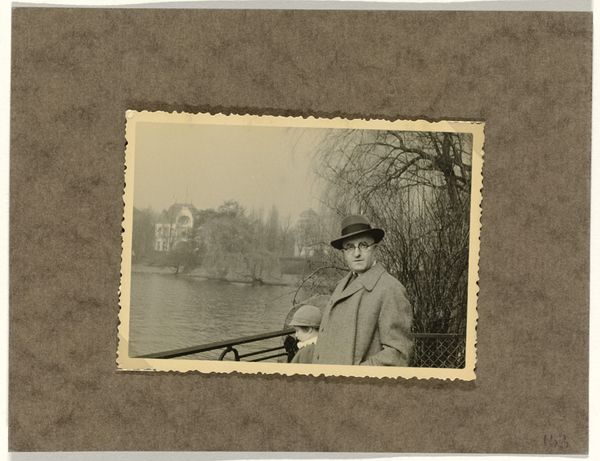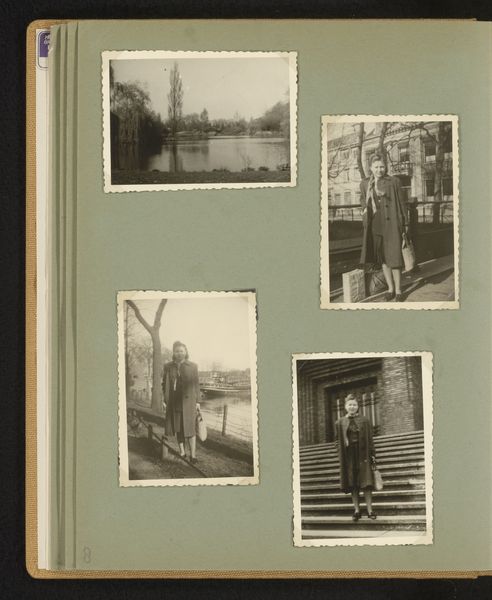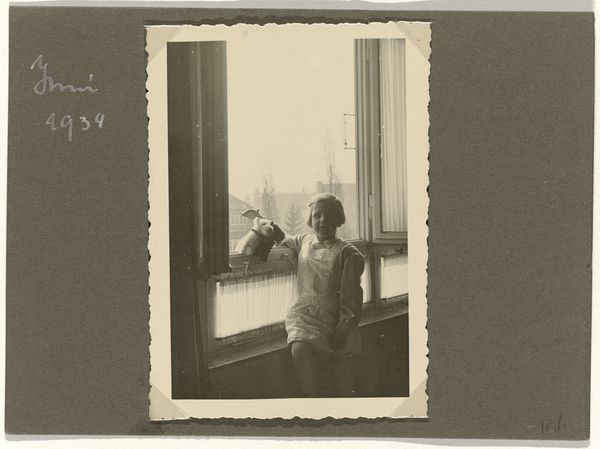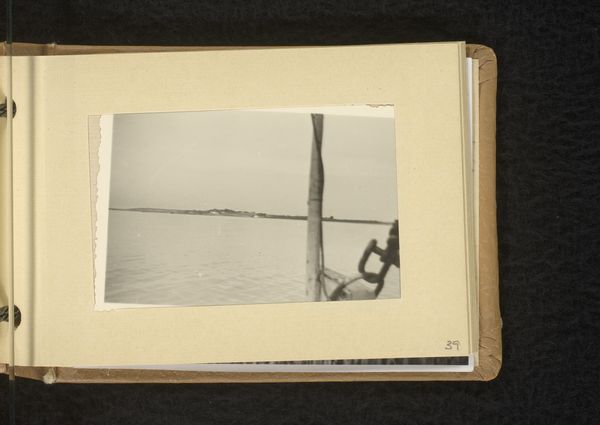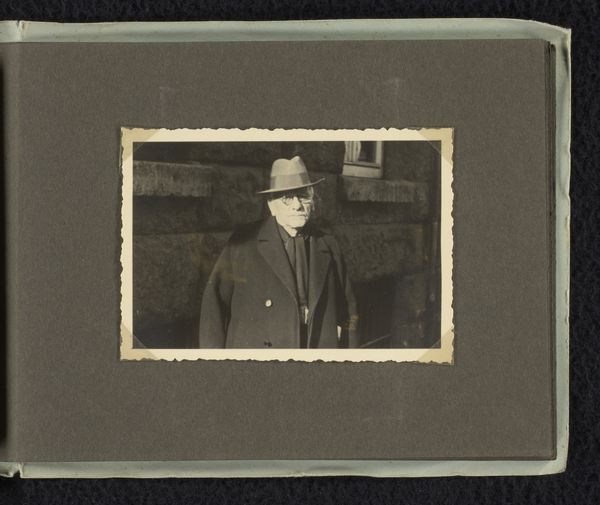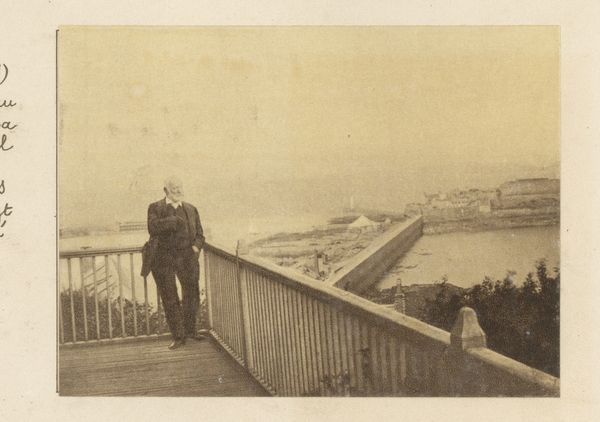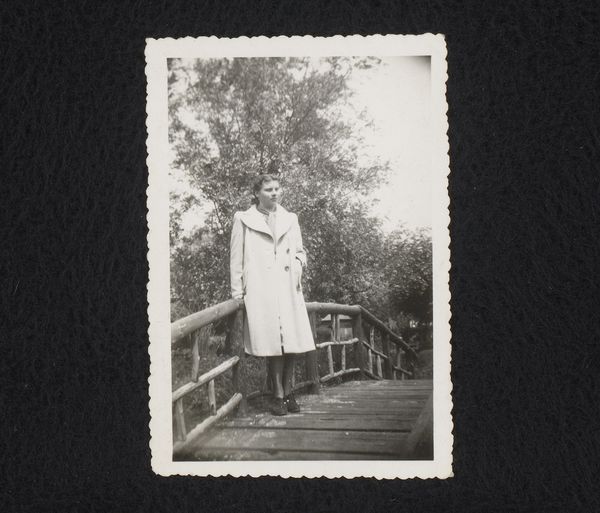
Isabel Wachenheimer aan de rivier de Alster tijdens het bezoek van Isabel Wachenheimer aan haar oom Willy Moos in Hamburg Possibly 1935
0:00
0:00
Dimensions: height 90 mm, width 65 mm
Copyright: Rijks Museum: Open Domain
Editor: Here we have a gelatin silver print, "Isabel Wachenheimer aan de rivier de Alster tijdens het bezoek van Isabel Wachenheimer aan haar oom Willy Moos in Hamburg," likely from 1935. It's a little girl overlooking a misty river. There's a wistful, almost melancholy feeling to it. What do you see in this piece? Curator: Immediately, I see layers of visual encoding at play here. A portrait embedded within a landscape evokes cultural memory and identity. The child is clearly positioned within the frame and almost pressed up against a man-made barrier. It seems like a gate, a permeable object – where does that divide exist on the landscape itself? It presents the viewer with a choice: a young child caught between worlds or possibilities. Editor: Caught between worlds? That's an interesting take. Can you elaborate on that idea of worlds? Curator: Of course. Look at how the blurred background seems to blend earth and sky into one plane. It symbolizes transience, uncertainty, especially considering this was captured perhaps on the eve of the second World War, but this is balanced by a stable foreground of both a young girl, and some fencing that gives a sense of home or safety. The Alster River takes on added weight: Is it freedom, escape, or perhaps simply oblivion, in relation to the life the young woman is expected to lead? Even her gesture of pointing, her future, is caught between those signs. Editor: I never would have seen all of that on my own. Curator: The power of images lies precisely in this multifaceted potential, this dialogue with symbols we create. Editor: Well, thanks to you, I definitely have a richer understanding of this photograph now. Curator: Likewise, it's a reciprocal exchange.
Comments
No comments
Be the first to comment and join the conversation on the ultimate creative platform.
